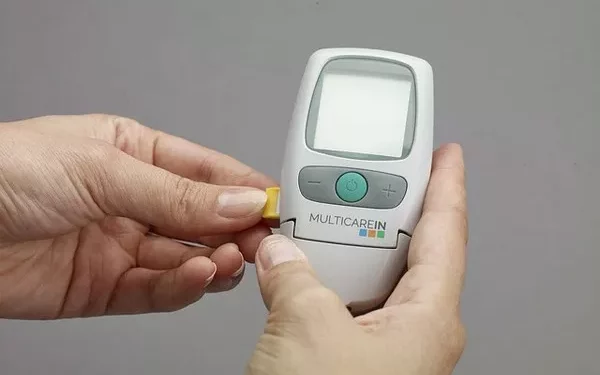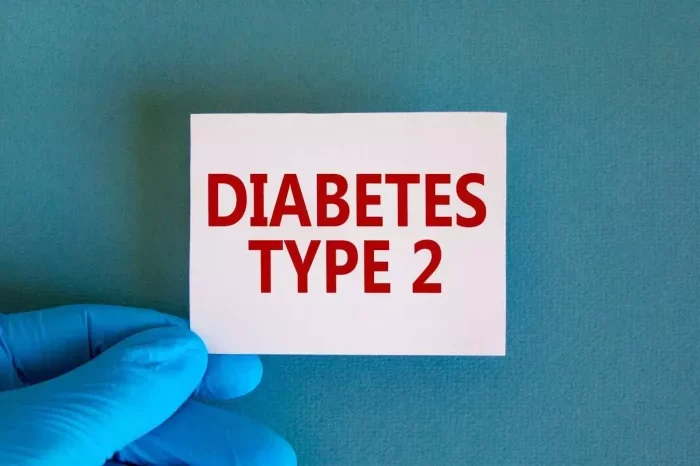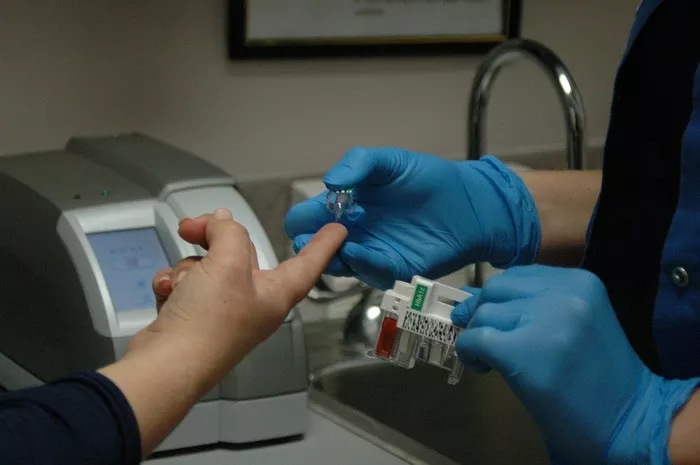Prediabetes is a condition in which blood sugar levels are higher than normal, but not yet high enough to be classified as type 2 diabetes. This stage is often considered a warning sign and an opportunity for intervention to prevent the progression to full-blown diabetes. One of the most important tools used to assess blood sugar levels and diagnose prediabetes is the Hemoglobin A1C test, also known simply as A1C.
The A1C test measures the average blood sugar levels over the past two to three months. It is an important diagnostic tool for identifying those at risk of developing diabetes, including individuals with prediabetes. In this article, we will explore the significance of the Hemoglobin A1C test in prediabetes, how it works, and how it can help in the early detection and management of blood sugar levels.
Introduction to Hemoglobin A1C
Hemoglobin A1C is a form of hemoglobin that is chemically linked to glucose (sugar). Hemoglobin is the protein in red blood cells that carries oxygen throughout the body. When glucose enters the bloodstream, it attaches to hemoglobin molecules. The higher the blood sugar level, the more glucose attaches to the hemoglobin. Over time, this creates a long-lasting marker of an individual’s average blood sugar level.
Unlike a fasting blood glucose test, which only provides a snapshot of blood sugar at one point in time, the A1C test reflects the average blood sugar level over a period of two to three months. This makes it a more comprehensive test for assessing long-term blood sugar control.
How Hemoglobin A1C Works
When glucose is present in the bloodstream, it binds to hemoglobin to form glycated hemoglobin, or HbA1C. The amount of HbA1C formed depends on the level of glucose in the blood over time. Essentially, the higher the glucose levels, the greater the amount of HbA1C. Once formed, HbA1C remains in red blood cells for the life of the cell, which is typically about 120 days.
The Hemoglobin A1C test measures the percentage of hemoglobin molecules in the blood that have glucose attached to them. For example, if 5% of the hemoglobin in a person’s blood is glycated, the person’s A1C level would be reported as 5%. The result is used to assess how well blood sugar has been controlled over the past few months.
The Role of Hemoglobin A1C in Diagnosing Prediabetes
The A1C test is one of the primary tools used to diagnose prediabetes. The American Diabetes Association (ADA) has established the following A1C thresholds for diagnosing prediabetes and diabetes:
Normal A1C: Less than 5.7%
Prediabetes (impaired glucose tolerance): 5.7% to 6.4%
Diabetes: 6.5% or higher
An A1C between 5.7% and 6.4% indicates that an individual has prediabetes. In this stage, blood sugar is elevated but not yet at the level required to diagnose type 2 diabetes. It is essential for individuals with an A1C in this range to take action through lifestyle changes such as improving their diet, increasing physical activity, and, when appropriate, working with a healthcare provider to prevent or delay the onset of diabetes.
Why is Hemoglobin A1C Important for Identifying Prediabetes?
Hemoglobin A1C is a crucial marker in the early identification of individuals at risk of developing diabetes. There are several reasons why A1C testing is important for diagnosing prediabetes:
No Fasting Required:
Unlike fasting blood glucose tests, the A1C test does not require the patient to fast beforehand. This makes it a more convenient test, especially for individuals who may not be able to fast due to work, family, or other factors.
Long-Term Monitoring:
The A1C test provides an average of blood glucose levels over the past two to three months, which makes it a more accurate representation of long-term blood sugar control compared to a single blood glucose measurement.
Early Detection:
Because the A1C test reflects the average blood sugar levels over time, it can detect prediabetes before any noticeable symptoms of elevated blood sugar appear. Prediabetes often has no clear symptoms, so relying on A1C testing is essential for identifying those at risk before they progress to type 2 diabetes.
Prevention and Management:
For individuals diagnosed with prediabetes, early detection offers a crucial window of opportunity for intervention. By identifying prediabetes early, healthcare providers can recommend lifestyle changes and, in some cases, medications to reduce the risk of developing type 2 diabetes.
Factors That Influence Hemoglobin A1C Levels
While A1C is an excellent marker for assessing long-term blood sugar levels, there are several factors that can affect its accuracy and interpretation. It is important to consider these factors when evaluating A1C results for prediabetes.
Anemia:
Anemia, or low red blood cell count, can affect A1C results. In individuals with anemia, particularly iron deficiency anemia, the lifespan of red blood cells may be shorter, leading to lower A1C levels. Conversely, in people with certain types of anemia (e.g., sickle cell anemia), the results may be artificially high.
Hemoglobin Variants:
Certain genetic variations of hemoglobin can lead to abnormal A1C results. For example, individuals with hemoglobin variants such as sickle cell trait or hemoglobin C may have inaccurate A1C readings. In such cases, alternative methods of assessing blood glucose levels may be used.
Kidney Disease:
Chronic kidney disease (CKD) can interfere with the body’s ability to clear glucose from the bloodstream, which may lead to higher blood sugar levels and, consequently, higher A1C readings. In individuals with CKD, it may be necessary to use additional tests to monitor blood sugar levels.
Age and Gender:
Aging and gender can also influence A1C levels. Older adults often have higher A1C levels due to changes in insulin sensitivity and glucose metabolism that occur with age. Additionally, women may have slightly higher A1C levels than men, although this difference is typically small.
Medications:
Certain medications can affect blood glucose levels, and by extension, A1C levels. For instance, corticosteroids, which are used to treat inflammation, can increase blood sugar levels, potentially leading to higher A1C levels. Additionally, some medications used to treat diabetes can lower A1C levels by improving insulin sensitivity or increasing insulin production.
Pregnancy:
Pregnancy can lead to changes in blood sugar regulation, especially during the second and third trimesters. Gestational diabetes, which occurs during pregnancy, can cause higher A1C levels. It is important for pregnant women to monitor their blood glucose levels closely, as uncontrolled blood sugar can impact both maternal and fetal health.
How to Lower Hemoglobin A1C Levels and Prevent Prediabetes
Once prediabetes is diagnosed through the A1C test, the next step is to work towards lowering blood glucose levels to reduce the risk of developing type 2 diabetes. Here are several strategies that can help lower A1C levels:
Adopt a Healthy Diet:
One of the most effective ways to lower A1C levels is through dietary changes. A healthy diet that emphasizes whole foods, such as vegetables, whole grains, lean proteins, and healthy fats, can help regulate blood sugar. Limiting processed foods, sugary snacks, and beverages, and managing portion sizes, is also crucial.
Increase Fiber Intake: High-fiber foods, such as fruits, vegetables, legumes, and whole grains, help regulate blood sugar by slowing digestion and preventing rapid spikes in blood glucose levels.
Limit Simple Carbs and Sugars: Simple carbohydrates, such as those found in sugary drinks and snacks, can cause rapid increases in blood glucose levels. Choosing complex carbohydrates, which are digested more slowly, can help keep blood sugar stable.
Exercise Regularly:
Physical activity improves insulin sensitivity, helping the body use insulin more effectively and regulate blood sugar levels. Regular aerobic exercise, such as walking, cycling, or swimming, can help lower A1C levels by improving blood glucose control. Strength training exercises, such as lifting weights, can also help build muscle mass and further improve glucose metabolism.
Manage Weight:
Excess weight, especially around the abdomen, increases the risk of insulin resistance, which can elevate blood sugar levels. Losing weight, even a small amount, can significantly improve insulin sensitivity and help lower A1C levels.
Monitor Blood Sugar Levels:
Regular blood glucose monitoring is essential for individuals with prediabetes. By tracking blood sugar levels throughout the day, individuals can make informed decisions about their diet, exercise, and medication. Continuous glucose monitoring (CGM) devices can provide real-time data, helping individuals maintain stable blood glucose levels.
Consider Medication:
In some cases, healthcare providers may recommend medications to help manage blood sugar levels in people with prediabetes. Metformin, a medication commonly used to treat type 2 diabetes, can help reduce blood sugar levels by improving insulin sensitivity. However, lifestyle changes remain the cornerstone of managing prediabetes.
Conclusion
The Hemoglobin A1C test is a vital tool in identifying prediabetes and assessing the long-term regulation of blood glucose levels. By understanding how A1C works and the factors that influence blood sugar levels, individuals can take proactive steps to manage their health and prevent the progression to type 2 diabetes.
For those diagnosed with prediabetes, early intervention is key. Making lifestyle changes such as adopting a healthier diet, increasing physical activity, losing weight, and monitoring blood glucose levels can all help lower A1C levels and reduce the risk of developing type 2 diabetes.
By working closely with healthcare providers and taking control of their health, individuals with prediabetes can lower their A1C and enjoy a healthier, diabetes-free future.
Related topics:
What Is the Limit of Random Blood Sugar?



























